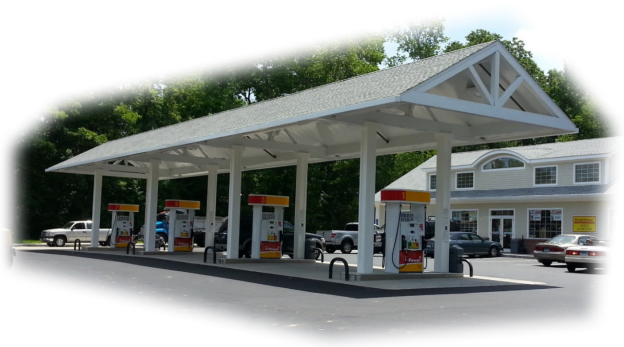If you are new in gas station business and looking to expand your understanding of various system components (in particular gas stations sump types) that assist in the operations of a gas station, then this guide is for you.
 A sump is basically a low space, typically dug into ground, often used for the collection and containment of undesirable liquids or chemicals.
A sump is basically a low space, typically dug into ground, often used for the collection and containment of undesirable liquids or chemicals.
This same description can somewhat be extended to gas stations sumps as well.
A below-ground chamber, gas station sump, provides access to gas station tank system components and also protects these components from the compressing forces of underground rocks. When contained, it prevents oil leaks and other harmful liquids from seeping into the surrounding soil.
Containment sumps are mostly either steel, fiberglass or polyethylene. Typical underground sumps found at gas stations these days are made of either fiberglass or polyethylene. Metal corrodes so you don’t really find them as an underground choice but they are used for aboveground applications as well as above grade transitions due to their strength with a heavy powder coated or epoxy finish to help fight corrosion. Fiberglass is the better quality and more expensive option for underground but they all do the same thing; prevent petroleum products from seeping out and water and soil from seeping in. In the long haul, this protects the surrounding soil and ground water as well as the fueling components found around the tank and under the pumps from corrosion and makes them much easier to access for inspection and maintenance.
Any penetration into a sump requires the use of entry fittings (also known as a penetration fitting) for any fuel piping or electrical conduit that enters via a sump wall that is then bonded to both the sump wall and pipe or conduit using a sealant or adhesive. The type of sealant or adhesive use depends on the material of the sump, pipe and conduit. Regardless of what materials are being used, regulations across most of the United States require periodic “tightness” testing of sumps and entry fittings to ensure containment integrity. Currently there is a trend toward double wall sumps with the ability to electronically monitor the interstitial space constantly which can do away with the tightness testing or increase the time between physical inspections.
Anyway, so when you talk about sumps associated with underground tank systems, you are basically referring to one of the four sump types listed below:
- Dispenser sumps
- Turbine sumps
- Transitional sumps
- Spill buckets
Let’s take a look where each of these sumps are located and what purpose do they serve.
Dispenser sumps

As the name suggests, dispenser sumps are located right below your fuel dispenser. They provide access to dispenser piping, shear valves, flex connectors and other dispenser related equipment.
Turbine sumps

Turbine sumps can be located directly above your USTs. They provide access to the turbine area which typically houses piping, turbine pump head, line leak detectors, wiring, monitoring devices and other equipment. Turbine sump lids come in many shapes including square, rectangular, round and oval.
Transitional sumps

Transitional sumps, also known as intermediate sumps, are sumps that can be found along the piping that connects USTs to dispensers. To access the piping, transitional sumps are used. Some areas where you’re most likely to find transitional sumps are piping junctions, piping transitions and low spot piping assemblies, vent stacks transitioning from below to above ground.
Spill buckets

Spill buckets or spill containment manholes are always contained with many variations available. They are typically located at the point where your fuel delivery man connects the product hose to your tank. Their main function is to contain fuel spills that can occur during tank refilling. Spill buckets vary in size, typically ranging from a minimum of 5 gallons to a maximum of 25 gallons. Spill buckets may also be used over the tank vapor fitting where tank vapors are collected as fuel is being dropped into the tank or other tank top fittings as required per the location’s specifications and local regulations.
Now that you know about the different gas station sump types—where they are located and what purpose do they serve—why not step up your knowledge on different gas station equipment and learn about fuel dispenser nozzles.
Check out this blog: All you need to know about service station nozzles




